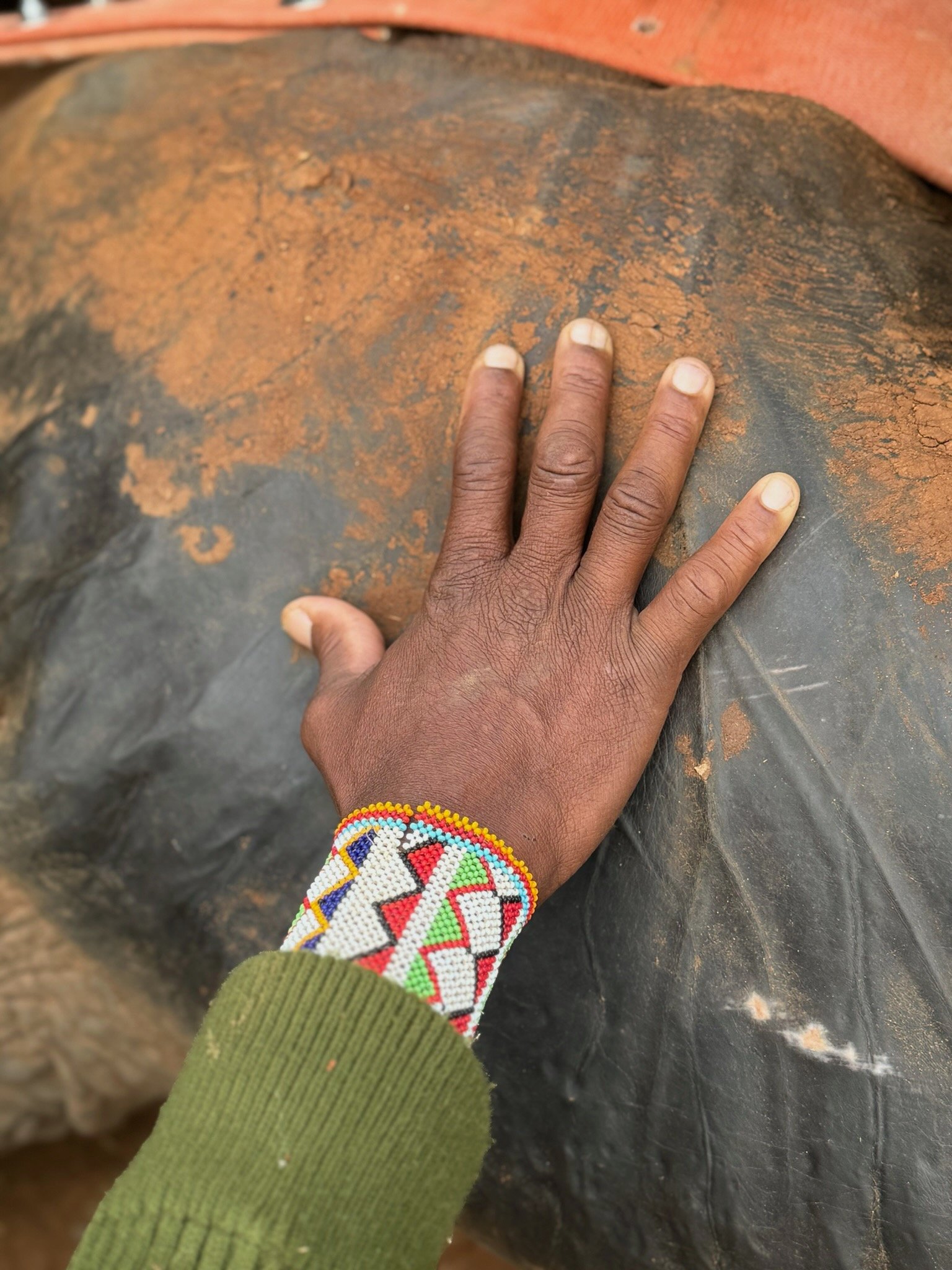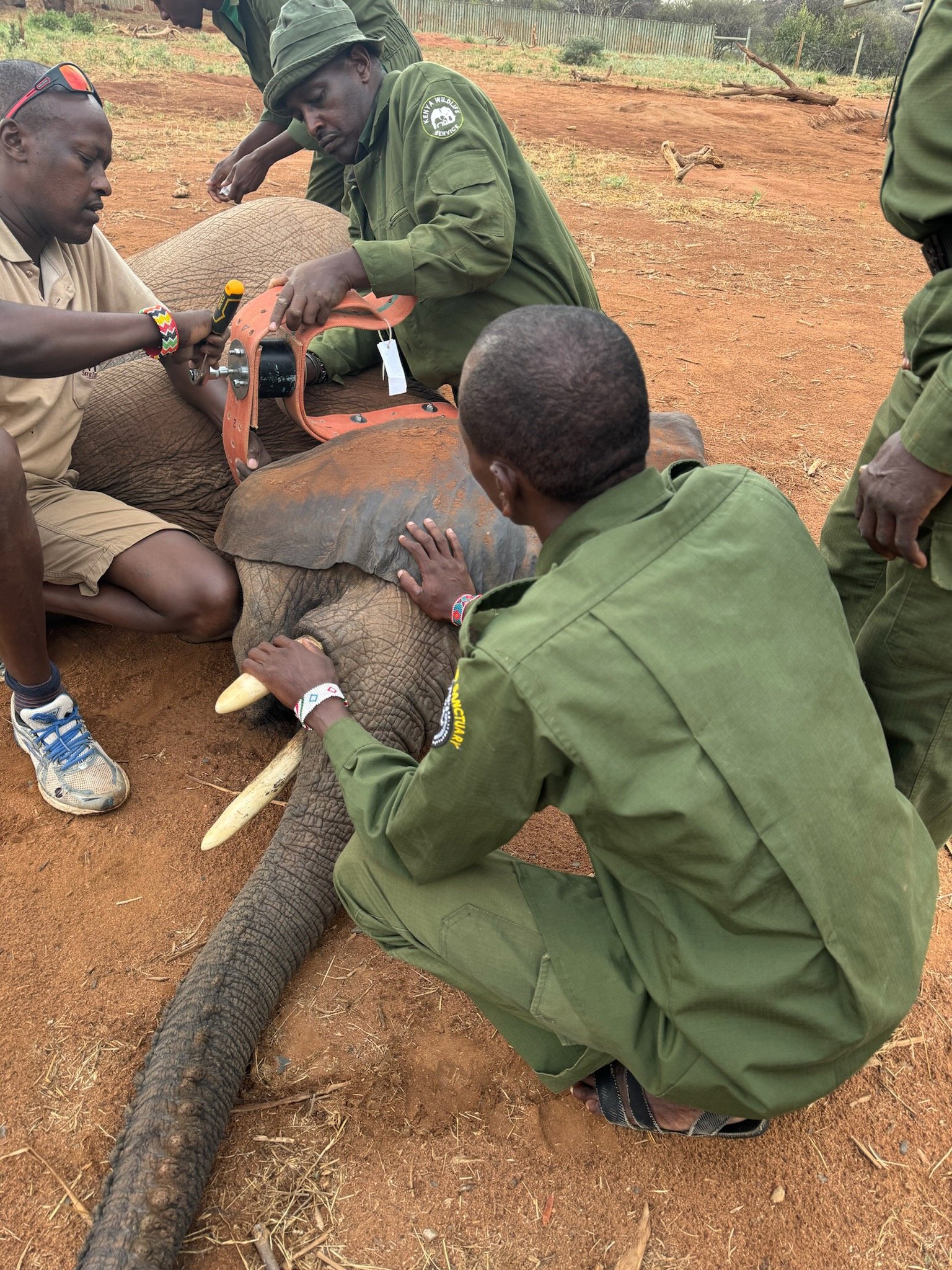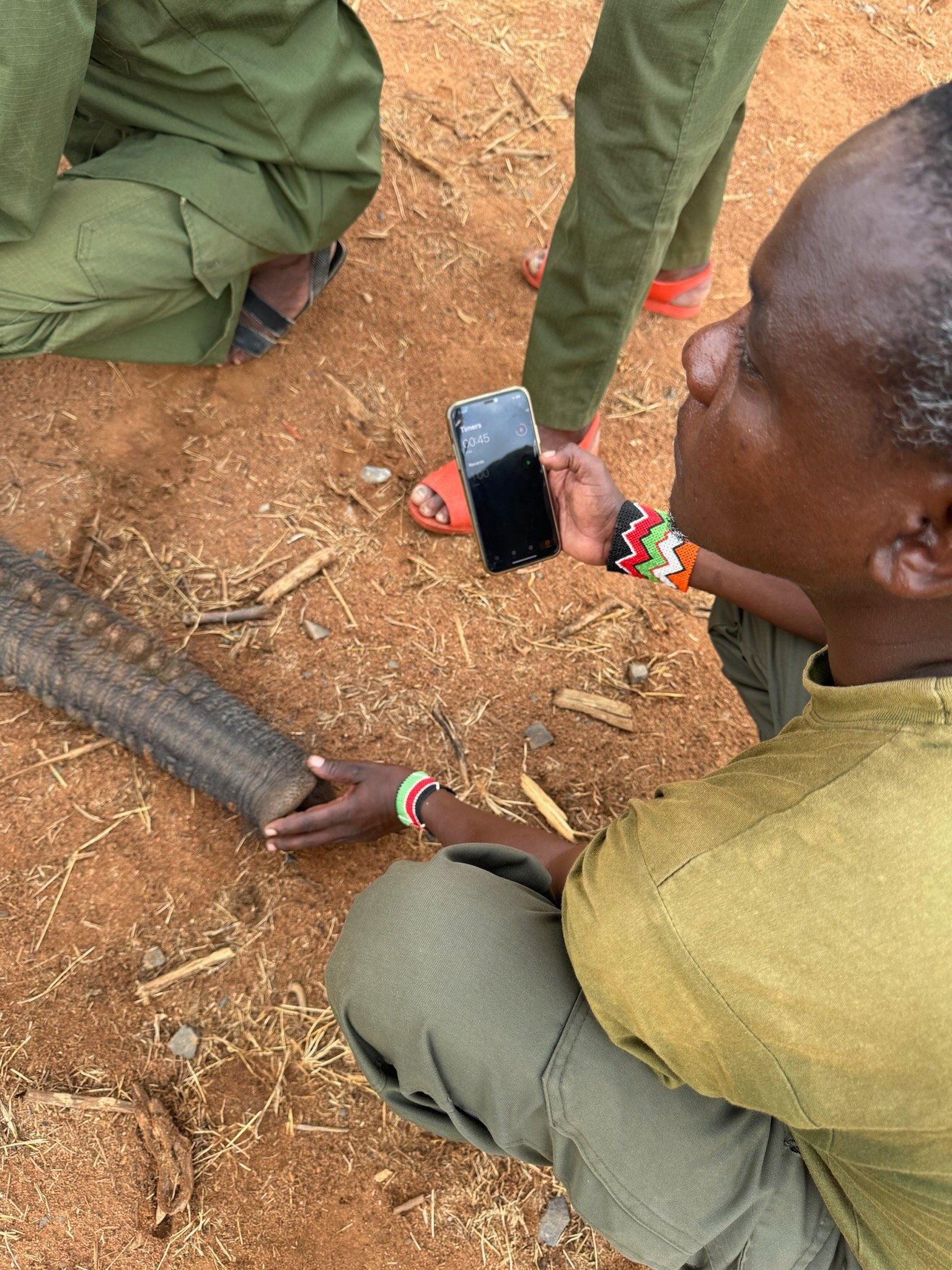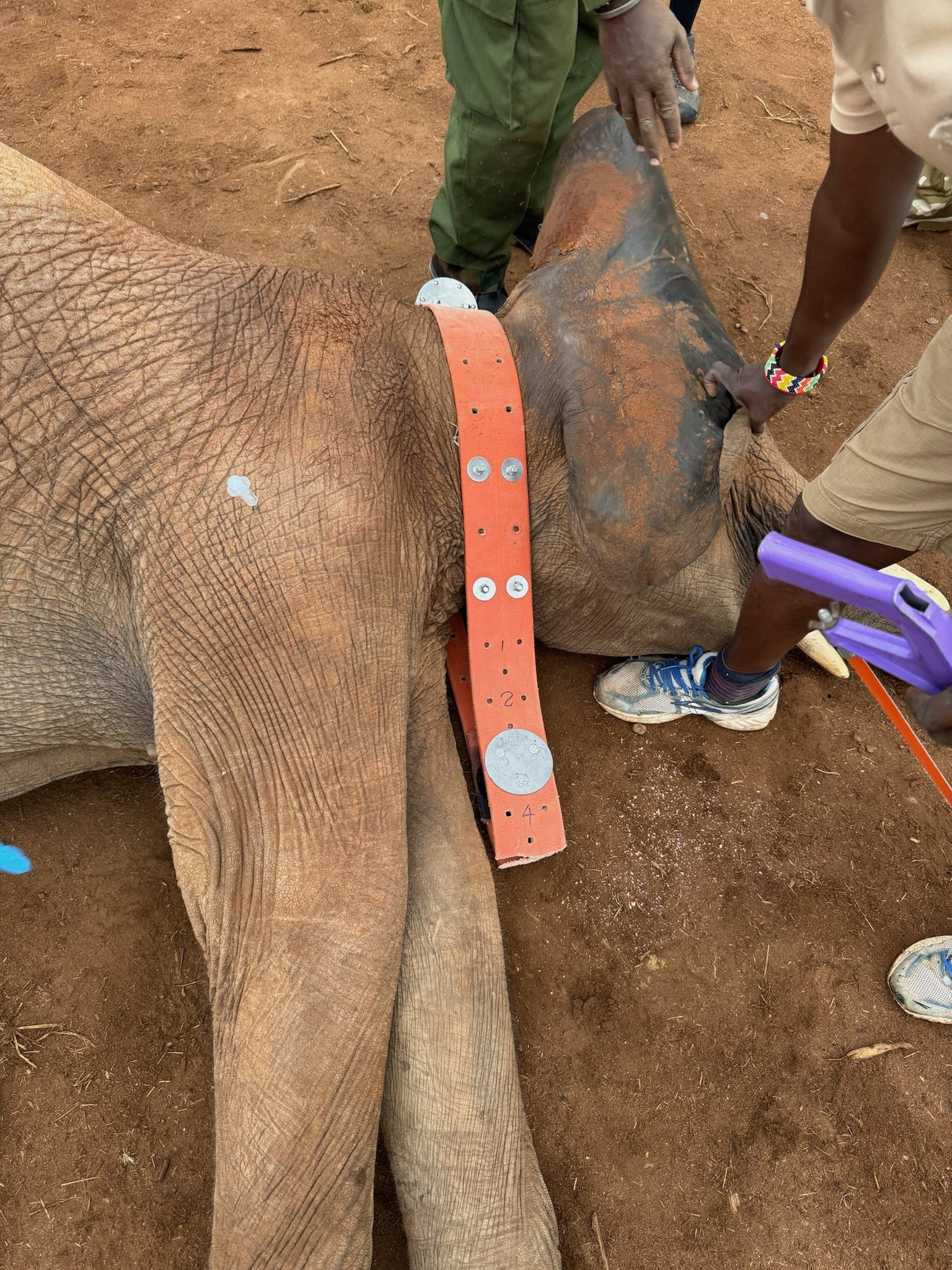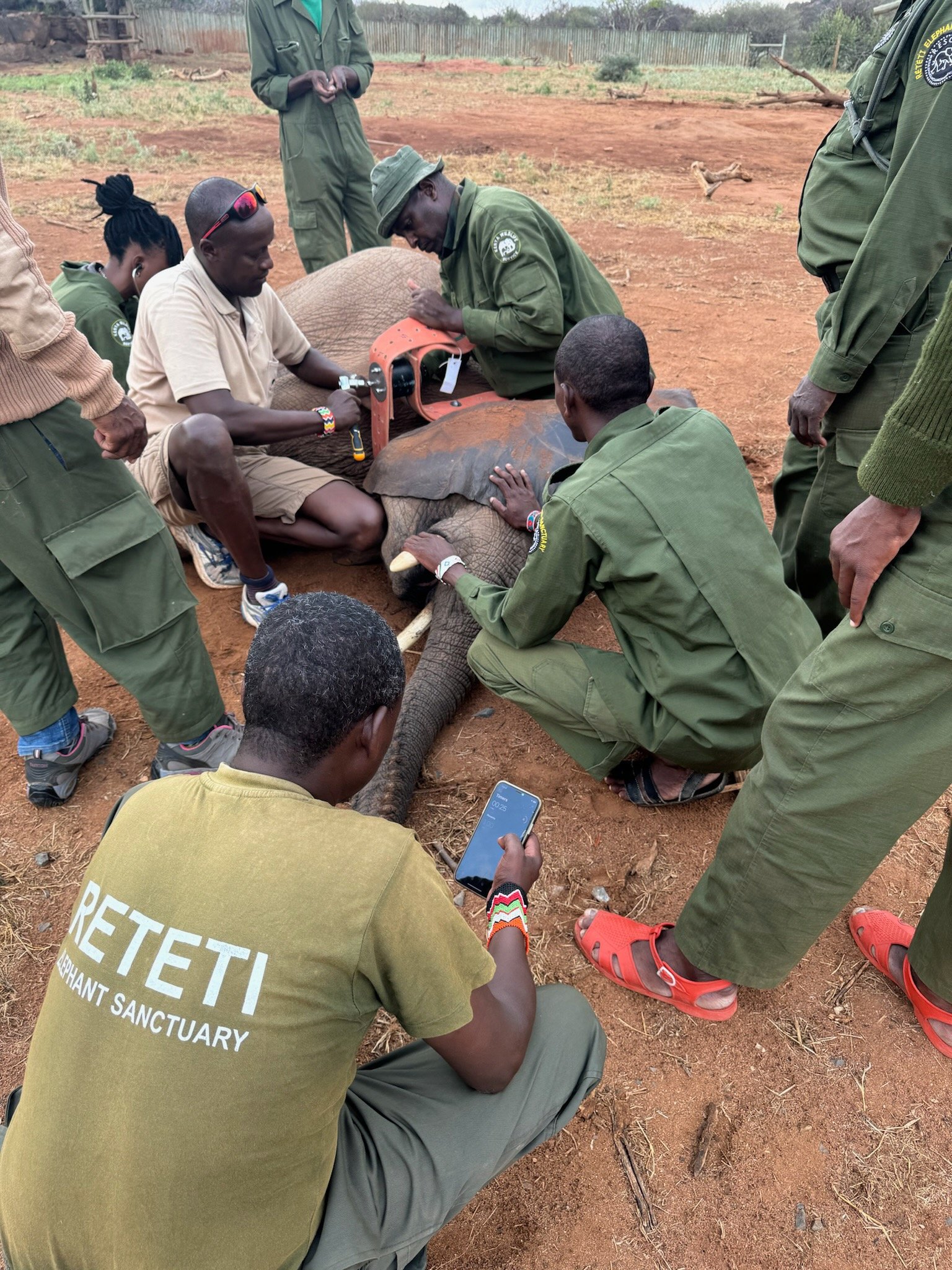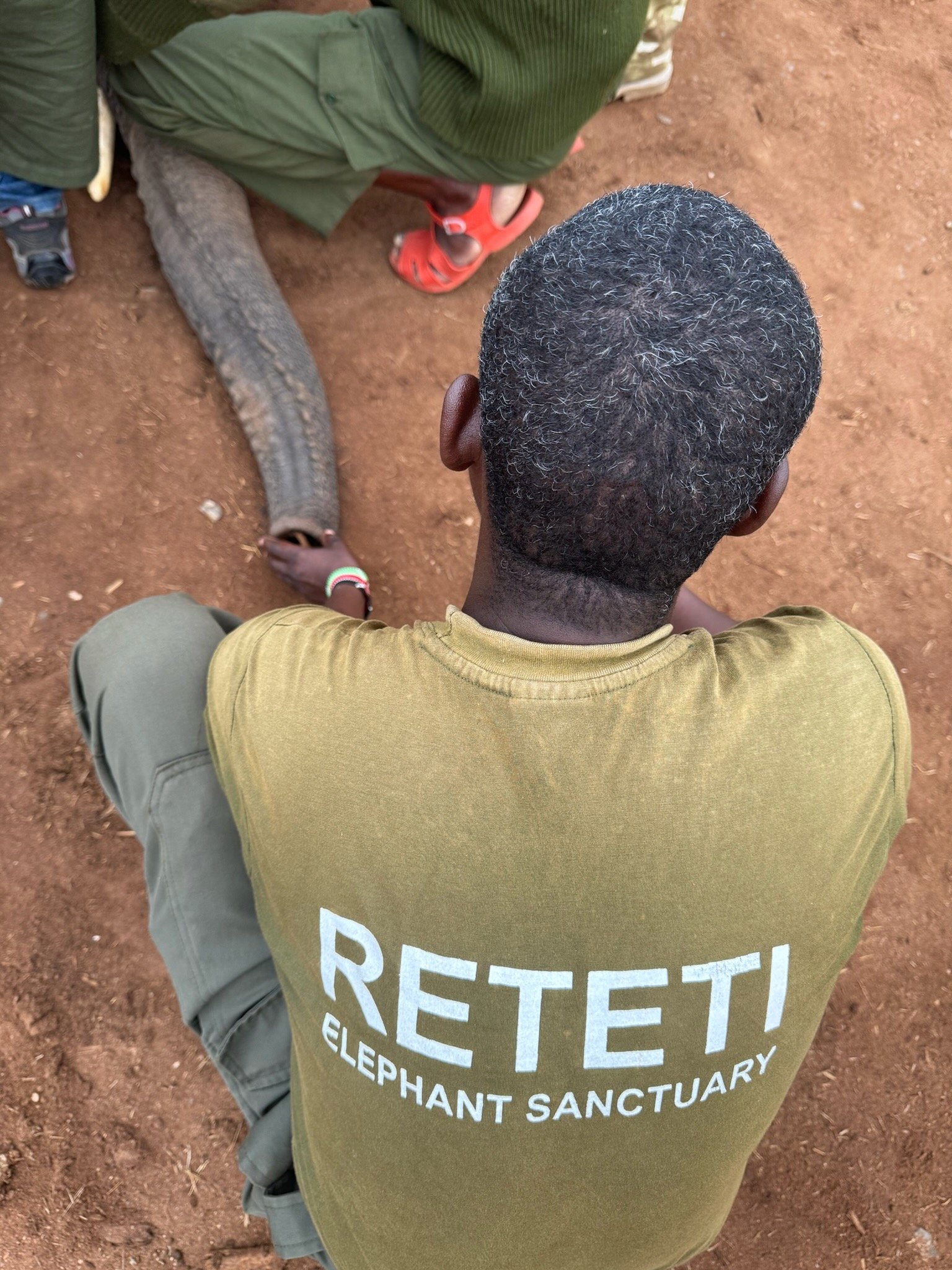Our release herd received their GPS collars!
Meibae, Olpejeta and Lorian browsing with their collars.
Reteti’s release herd is making huge strides on their way back to the wilderness – and last week marked another milestone with their successful collaring! We are immensely proud of the passionate team who pulled this important task off so gently and seamlessly – and even more proud of the ellies, who were unflappable through it all! It almost felt like graduation day – as if each of them received a celebratory sash!
An endeavour like this requires careful planning and thought, and no stone was left unturned to make the best possible decisions for the herd!
It’s the first rewilding project of its kind – and these orphans are being released into a Namunyak Community Conservancy, which is populated by the indigenous Samburu as well as 6,000 wild elephants. Namunyak is not a fenced national park and Reteti Elephant Sanctuary is located within the conservancy’s 850,000 acres of pristine wilderness. Both the sanctuary and this incredible landscape are owned and protected by the Samburu, and there haven’t been any incidences of poaching for decades on this land! The release marks such an exciting step going forward, as it will open up vast tracts of landscape to rewild more orphans as we keep looking ahead.
About the collars
To ensure that the release orphans thrive back in their natural habitat, they will be closely monitored when they step into Namunyak’s expansive wilderness. To give them the best possible chance to integrate fully as they become free-roaming wild elephants who live in harmony with the indigenous Samburu they share this land with, it will be vital to monitor them closely and do thorough and ongoing research. Helping us to shepherd them as they explore the landscape, the data collected will also be immensely valuable to inform decisions that will protect hundreds more elephant orphans in years to come.
The GPS collars are optimal for Namunyak’s elephants as they’ve been tried and tested over many years – thanks to the tireless work of @savetheelephants. An incredible amount of research goes into their design, and the elephants get used to them very quickly! As well as being safe, the weight of a collar on an elephant is equivalent to a small pendant necklace around a human’s neck. It doesn’t bother them and allows us to track them without getting in their way. The collars for the release orphans, which are fitted with GPS devices, were specially made by Savanah Tracking and supplied by Save the Elephants.
The Kenyan government’s department of wildlife outlines tracking as one of the conditions for the elephant orphans to be released, and Save the Elephants and Kenya Wildlife Service have been using tracking collars to give a voice to elephants and help protect them for several decades.
Just like tailoring clothing, it’s impossible to get the perfect fit for a collar beforehand, but as soon as the team tried them on the calves, they quickly set to work to cut off any excess material. In no time, each orphan’s collar was fitting like a glove! The material is extremely thick, and believe it or not, the best tool to cut it without making a noise that might irritate the ellies is a saw! So if you glimpsed one on the video and wondered what it was for – now you know!
Watch the video to see the collars up close.
The collaring
By now the elephants in the release have become much too wild to fit a collar without intervention! This is great news in terms of their readiness to be released – but a little less so for the job at hand!
Fortunately, we expected nothing less of our ‘graduates’, and Dr. Sharon Mulindi – Senior Veterinary Officer at Kenya Wildlife Service (KWS) – came well prepared! After darting the elephants with a low dose to sedate them, all hands were on deck to fit the collars, so we could get the orphans back on their feet in a flash! The elephants were in the best possible hands – from David Daballen from STE helping to fit their collars and Dr. Sharon monitoring their heart rates.
The hive of activity also included a keeper monitoring their rate of breath. If you look closely, you’ll see him doing this by holding his hand at the end of an elephant’s trunk!
It was the most inspiring day, which unfolded right here in the big herd’s boma at Reteti! The familiar environment made everything as calm as possible for the orphans, and it was incredible to witness the spirit of teamwork between all!
Watch the video to see how the elephants were collared.
Already on to the ‘neck’s best thing’! 24 hours after their collars had been fitted, the elephants were browsing and going about life like nothing ever happened! In the video below you'll see Lorian, Olpejeta, Meibae and Kone in order of appearance.
Watch the video to see how relaxed the elephants are with their collars.
Thank you for following our elephants’ release stories.
We look forward to sharing their journey back to the wild with you. Our next blogs include how we know an elephant is ready for release and an explanation of the various stages of release.
Subscribe to our newsletter or follow us on Instagram to stay updated!


